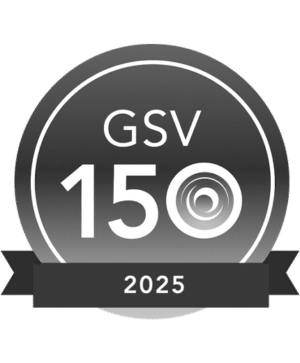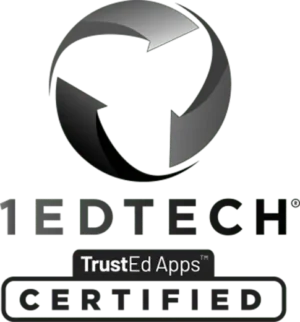
Brochures are a fantastic way to showcase how your partnership with teachers can help them grow. Casey Watts, IC in Texas, shares some of her must-have sections to include in your own brochure, as well as some tips for distributing them to teachers.
Achieving clarity of purpose takes time, patience, and strategy. We can’t ever assume that teachers, or administrators, understand what we provide as instructional coaches. So, building clarity around our role will allow others to utilize us well, promoting the culture of collaboration needed to unlock the potential inside our schools. As each new school year approaches, one strategy to clarify my role involves creating an instructional coaching brochure. Why this format? Because brochures can hold so much information, they can be distributed physically and digitally, and they look professional yet still visually enticing.
Creating a Coaching Brochure
Your digital copy can link to specific examples on the web for each of your support offerings.
Five Must-Haves to Include
First, decide on the purpose of the brochure. Perhaps imagine that you are a salesperson, strategically laying out a pitch to entice your readers and encourage them to seize what you have to offer. For my brochure, designed to set out my vision for coaching and clarify my role, I found the following elements essential to sell my services—feel free to use them too!
1) Inspirational quotes
The truth is that people are drawn to—and encouraged by—powerful quotes, which are usually derived from the work of an expert on a particular subject. Including inspiring quotes can nudge people to participate in work that often seems too vulnerable and risky.
2) Clarity on your role
While you will use the brochure to share what services you do as an IC, it can also help to outline what you do not do. Part of building clarity around your role means setting boundaries, and stating non-examples is a way to establish this. Try using a t-chart to outline the examples and non-examples in your coaching work.
3) Foundational beliefs
Teachers want to know what you’re all about, as someone that will be working closely with them. Of course, this will be most present in your interactions with them, but you can get a head-start by sharing your foundational beliefs as an instructional coach.
You can find out more about developing your coaching beliefs and actions in Jim Knight’s book, Better Conversations. You can also read more about it in one of their great blog posts!
4) A coaching menu
Now it’s time to showcase the services you provide and encourage your teachers to think about how they want to work alongside you. Do you have a coaching menu to use during the school year? Fill this brochure with the highlights of your coaching offers and a brief description of each item.
Pro tip: If you’re looking for a coaching menu example, you can check one out here.
5) Contact information
Leaving contact information is a necessity, but doesn’t need to be dull and straightforward. If you get a little more creative, you can have a greater impact on your reader. Amplify your basic contact details with QR codes that link to additional pages, such as:
- Your site page on the school’s website to paint a clearer picture of who you are, personally and professionally
- A Padlet, or other creation board, where you’ve curated resources helpful to teachers as they begin the year
- An introductory video where you showcase your personality
- An interest form that collects information about what your teachers are looking to learn in the year to come
- A fun survey that allows you to get to know them personally
When and How to Distribute
Just as what you include matters, when and how you share the brochure is important too. If you want to have a significant impact on building clarity around your role, there needs to be a strategy behind the delivery of your brochure. Here are a few options for when and how to share these brochures:
- Mid-summer before school begins: you might decide to physically mail out the brochure to new hires. This allows them time to process who you are, what you do, and how they can partner with you throughout the school year. It also opens up the opportunity for you to build sound relationships with the new hires before the chaos of school ensues.
- Beginning of the school year: ideally, you will have requested a small portion of an in-service session or faculty meeting to share with staff your offerings in person. Don’t simply leave a stack of brochures on a table for teachers when leaving the meeting. Instead, make eye contact, provide a greeting, and hand teachers your brochure face-to-face. Outside of a meeting, maybe you could visit each teacher’s classroom, have a brief and personable conversation, then hand them the brochure finishing off with, “I can’t wait to partner with you this year!”
- Every couple of months: send out your brochure in a newsletter as a reminder of your services, place it in teachers’ boxes, or perhaps leave a few copies next to the copy machines in the workroom. Clarifying your role continuously is imperative—and a reminder never goes amiss.
- End of the school year: this is a time when teachers reflect on their past year and start setting goals for the year ahead. This can provide an entry point for you to set out how you’ll support teachers in the year to come.
Final Note
Now that you’ve completed the brochure and have made a distribution plan, it’s time to sit back and await the massive amount of emails flooding your inbox from teachers who want your support. Ha, not really! You need to seek out opportunities to get into classrooms and actively model all that you highlighted in your brochure.
You’ve provided the information, and now it’s time to put it into action. In the end, the brochure is simply words on a page, and words are simply words until they are brought to life: go and bring your brochure to life!
Want a template to create your own brochure? Get the template here!
About Our Guest Blogger
Casey Watts is an instructional coach and leadership strategist in deep East Texas, with over 15 years of experience in education serving various roles. In addition to her work as an instructional coach, she enjoys educational consulting on the side.
Above all, Casey envisions communities of educators inspired by their careers, feel validated in their collaborative efforts, and end the school day fulfilled and eager for more! Through innovative conversations and coaching, she explores with fellow educators limitless instructional and leadership strategies that transcend content areas and grade levels to fulfill that vision. She enjoys writing about these strategies and more ideas on her blog.
You can follow Casey on Twitter and Instagram!
Stay Connected
News, articles, and tips for meeting your district’s goals—delivered to your inbox.






















